Caribou Monitoring
The CMU works with academics, industry, and government to facilitate applied research and provide scientific expertise to evaluate and monitor caribou recovery options.
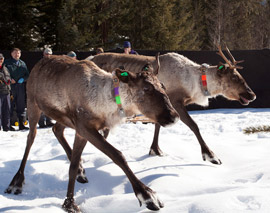
About the Project
“Most caribou populations in Western Canada have been declining over the past twenty years. The ultimate goal with these penning projects, in combination with other land use practices such as habitat protection, is to not only stabilize the herds but actually begin to see the populations grow at a level that we can detect and monitor those herds over time to see how they’re doing.” – Dr. Rob Serrouya
Woodland caribou are declining throughout much of their range in Canada, primarily due to increased predation. It’s possible that some of Western Canada’s caribou populations could disappear from the landscape within the next 20 years. As an example, the estimated annual rates of decline over the past 20 years for the seven caribou populations found in the Oil Sands Region of Alberta range from -4.6% to -15.2% per year.
The disturbance of caribou habitat from human activity, such as forest harvesting and oil and gas development, is a leading factor driving the increased predation of caribou.
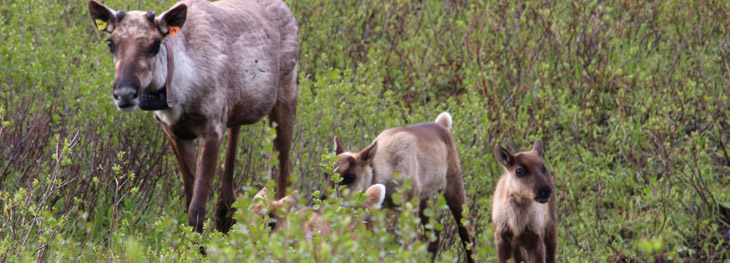
With unique expertise in biodiversity and human footprint monitoring across Alberta, the ABMI has established a Caribou Monitoring Unit (CMU). The CMU is working to support caribou recovery by:
- Helping to estimate and monitor the abundance of caribou
- Testing recovery options for caribou herd and monitoring the results of these tests over time
Our Approach
A caribou recovery process encompasses both understanding caribou decline and testing ways to recover caribou populations. The ABMI’s CMU is providing scientific expertise to evaluate the success of these tests, as well as working to improve methods for monitoring caribou populations.
The ABMI has developed a wall-to-wall human footprint map of the entire province of Alberta using satellite imagery. This dataset is being put to use in support of population estimation and monitoring the abundance of caribou over time – ABMI’s human footprint mapping can be used to identify relationships between human land use, habitat, and species abundance. The ABMI provides scientific information on status and trend of human footprint for the province of Alberta, including the sixteen caribou population ranges in the province.
In the absence of a provincial range plan for any of the multiple ranges in the province, there are several strategies being pursued in Alberta to attempt to recover caribou populations. These include wolf control in the Little Smoky herd, integrated land management practices to reduce the footprint left by forestry and energy, and linear features restoration.
The CMU is currently involved in testing an experimental caribou recovery project to address the issue of increased predation in Alberta using predator exclosure fencing. The CMU also plays a scientific advisory role in two independent maternal penning projects in BC. Predator exclosure fencing and maternal pens are designed to increase caribou survival by providing them with a refuge from predators.
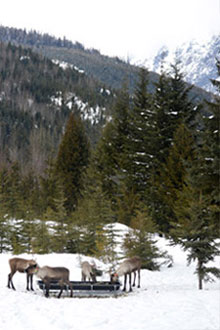
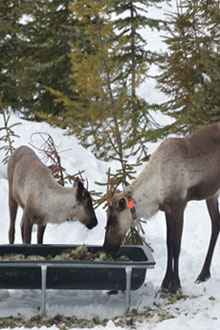
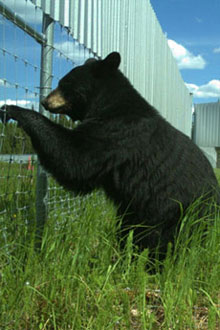
Preliminary Results
The predator exclosure fencing trial is testing different fence design options for different habitats across boreal Alberta. The exclosure is baited to discover what predators are attracted to the fence and how to keep them out. Once the best design(s) is identified, the goal is to fence a very large area (~400 km²) to exclude caribou predators. Yearling caribou will be released from the fenced area to join the caribou range.
Maternal penning is designed to increase caribou calf survival by capturing pregnant female caribou and transporting them to the holding pen to give birth in a secure environment. Once the calves are about one month old, both adults and calves are released back into the wild. The ABMI’s CMU is actively monitoring the success of these projects in BC to inform the design of future recovery options.
Human footprint increased in each of the seven population ranges that overlap with the Oil Sands Region in Alberta from 2007 to 2010. The greatest net change in human footprint from 2007 to 2010 occurred in the Nipisi range with an increase of 1.3% total footprint.
The ABMI has previously conducted research determining whether future in-situ oil sands development will have significant impact on the movement of caribou across the landscape. That work, available here, indicated that the expected future density of aboveground pipelines (AGPs) will affect the caribou crossing rate, or the ease with which caribou can cross AGPs. A crossing rate of at least 25% across all types of in-situ oil sands infrastructure (including roads, wellsites, and facilities on top of AGPs) is necessary to maintain caribou home range sizes and movement rates.
Project Impact
Tracking changes in human footprint over time can be used to identify relationships between changes in land use and changes in habitat and species abundance, where they exist. In the case of caribou, a species that is declining throughout its range in Alberta, information from the AMBI’s CMU can inform land-use planning to minimize and mitigate impact of future development on caribou ranges and to inform priority conservation planning.
More questions? Feel free to contact:
Dr. Rob Serrouya
Manager, Caribou Monitoring Unit
serrouya@ualberta.ca
Dr. Stan Boutin
Department of Biological Sciences, University of Alberta
Alberta Biodiversity Conservation Chair, ABMI Science Centre Co-Director
stan.boutin@ualberta.ca